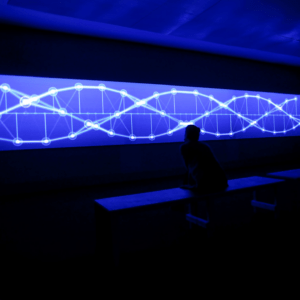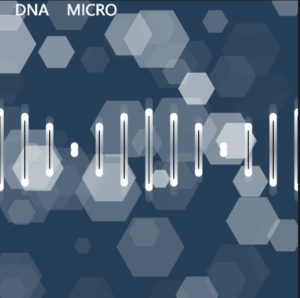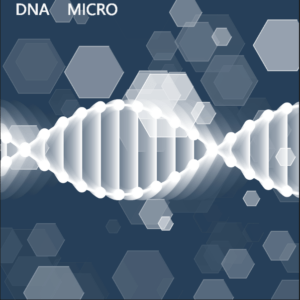PROJECT A REFLECTION
Part I Project description
Life: Zooming in from Macro to Micro
2023
Creative Coding
Arial Ruijia Hu
ELEVATOR PITCH
Life enables the participants to get deeper insights of the essence of our existence, especially when we delve into further research in scientific, biological or physical fields, etc. And to realize how small we are and how detailed we could be, magnifying is the approach that we can use. Else when we are thinking about the philosophical question which is ‘Where we come from?’ or ‘Who we are?’, we may probably explain that by zooming in and out from Macro mode to Micro mode.
ABSTRACT
By following the instructions on the up left corner, participants can switch among different modes to inspect the Macro, Mesoscopic and Micro aspects of life. On the Macro page, the Big Bang is continuing, an explosion and chaos could be manipulated so that the whole process will be completed. When we look through the chaos, demos of life are been bred, the variation of cells represents the brisking vividness of the first reproduction of life. To some extent, the complexity of the structure is enriched, the DNA inside is getting much more mature. Zooming into the cells, Gene Chain is forming and rotating with grainy background shining. From this project, people can reflect how they regard the life and to gain more imagination on what is bigger than Macro or what is even smaller than Micro in this boundless world.
MACRO
MESOSCOPIC
MICRO
Part II REFLECTION
1)Process: Design & Composition
The idea came from a great many of games that created the whole picture for the background and let players zoom in to reach a certain scene or interface. Also, right now, scientists are digging deep into what is the smallest molecule in the world and got stuck at quark. This trigger my thoughts of what the essence of life is, so it turned into 3 modes from Macro to Micro. One part that stands out is the iteration of the DNA chain. I got the thinking from art collection called Simple Harmonic Motion. At first, I made the base pairs move upside down by using sin()/cos(), at this point it seemed like a DNA, but lack of the feeling of rotation. After that, I came up with letting base pairs move on twining sin/cos waves and the outcome seems super cool.
For what has made my project different is that I input an insight of making connections between Macro and Micro world, this actually is making the transfer logical and seems like a process or a story. The thought of zooming in and out is also a novel perspective to present the switching among those modes.
 →
→  →
→ 
2)Process: Tecnical
- function()
Combining different sketches together is not a simple work. When I first pile up the code under one single function, it won’t run. When I titled different functions to contain each of them and use keyIsPressed to transfer among them, it got smoother.
- anglemode
There are two types of anglemode, one is DEGREE, another is RADIANT. I used it in two seperate sketches, Meso for rotation and Micro for the movements of sin/cos waves, however, when I put them together and something went wrong. The sin/cos waves moved slower and each cycle got longer. It’s actually the problem of not switching the anglemode into the same type so that the frameCount isn’t the same as before. So, whenever combining sketches under different setups, we need to note that the setups should be the same so that it could help the program operate in the right way.
- array
When I was working on the explosion, I thought about the random speed and explosion those hundreds of balls should follow and to design it for each of them would be time-consuming. After further study, I learnt about array, this really helped me enhance my own ability on handling a bunch of similar motions that need to be included at the same time. For motion 3, I also used array for the base pairs on the chain, so they can appear once and once again.
- rotation series(translate, push/pop, rotate, freq, amp)
These are the most difficult part for me and I asked professor for help.
3)Reflection and Future Development
From this project, I gained so much.
The start was hard, because I had a bunch of ideas but didn’t know how to make it touch down. But finally I made it!
After presenting the project and getting the feedback, there are some improvement I can continue to work on.
For the cells part, I can add more interactive operations so that the participants won’t wait so long for the variation process but to manipulate the variation by themselves or just jump to DNA.
For the transformation among the 3 modes, it’ll be better if I make it smoother. The backgrounds should be similar so that the connection could be much tighter but not too separate, the switching could also use time count to be automatic so that it’s easier for participants to comprehend the meaning of the project, also, if I could add more interfaces, it’ll make the whole process more complete.
For the texture of the sketches, I am thinking about how to make it less grainy, and I am going to ask for deeper technical approaches.
Leave a Reply